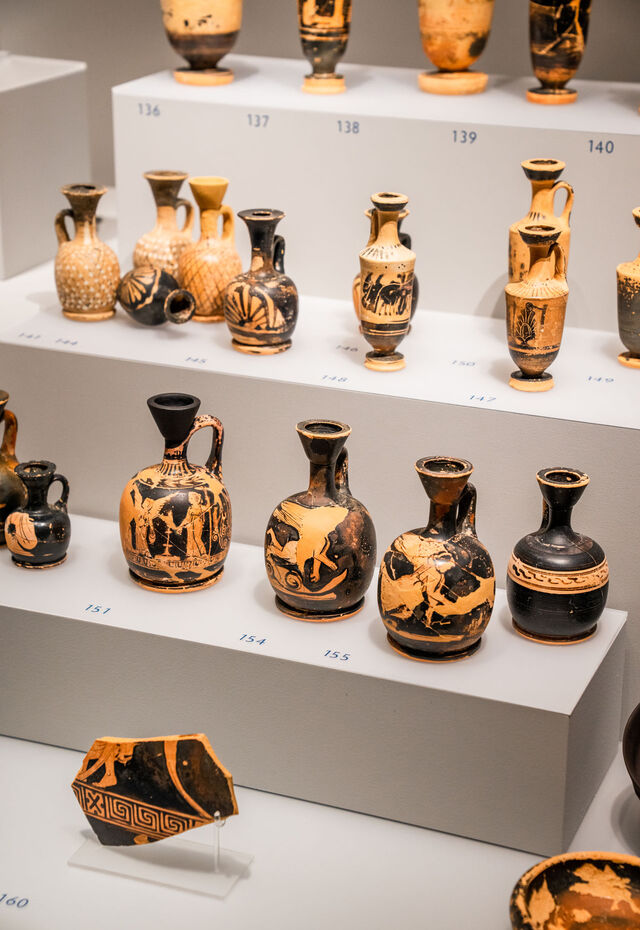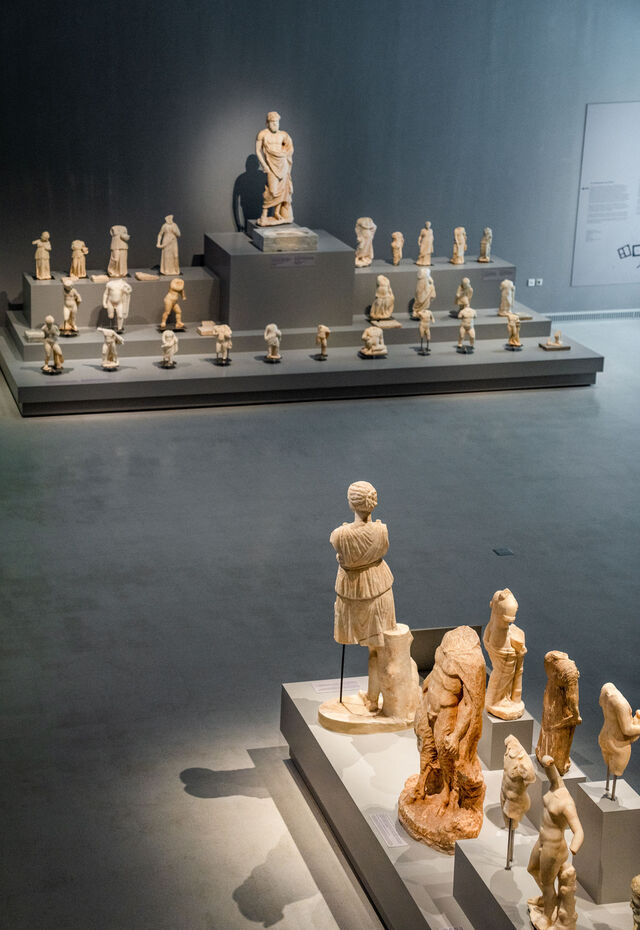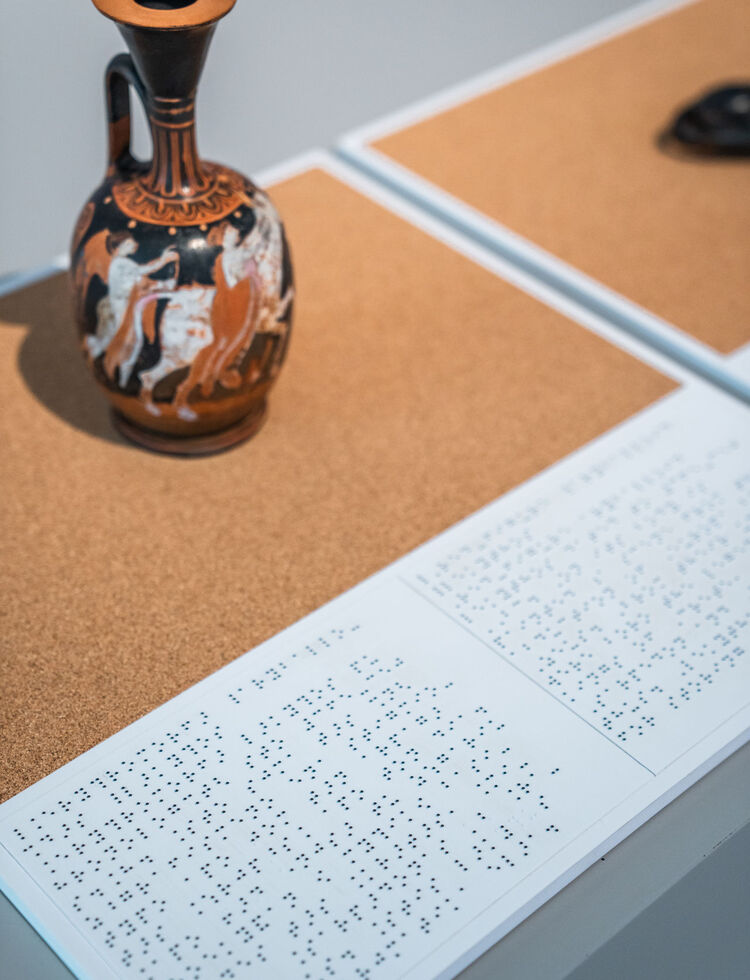

OVERVIEW
The Archaeological Museum of Chania
There’s so much to look forward to on your holidays in Chania (world-famous beaches, exploring the city’s Old Town, great food…) but make sure to dedicate some time to learning all about the fascinating history of Crete’s westernmost region. The Archaeological Museum of Chania is the perfect place to start.
Housed for four decades in the Franciscan Monastery of Agios Fragkiskos, it is now located in a state-of-the-art building in Halepa, the neighbourhood of Chania famous for being the heart of the city in Venetian times. Halepa was also the most aristocratic spot of Chania when it was the capital of Crete, attracting foreign embassies and the grand mansions of wealthy merchants. Eleftherios Venizelos, one of Greece’s most famous prime ministers and statesmen, was born and raised in Halepa and his house is now a listed building.
Along with panoramic views of Chania, the Archaeological Museum boasts 5,230 square metres of exhibition space and more than 3,500 artefacts. Objects include findings from excavations in both the city and wider area of Chania, exhibited in chronological order to represent the flow of civilisations through Chania’s long history. You’ll learn all about the social, administrative, religious, commercial and everyday life of the region’s citizens and leaders, through exhibits that take you from Prehistoric times (10th-8th centuries BC) up to the Roman occupation ending in the 3rd century AD.
DON'T MISS
The permanent exhibition of the Archaeological Museum of Chania is made up of 4 halls (3 on the ground floor and one on the first floor).
Prehistoric collection
Entering the museum, you begin your tour in the east wing, which explores the first traces of human existence in Chania. Ancient objects and replicas from Prehistoric times (specifically, the Late Neolithic and Bronze Age eras) shed light on the private and public lives of western Crete’s earliest human inhabitants, including the ground-breaking Minoan civilisation and the Mycenaean era, and explain the importance of the imperial palace of Kydonia (present-day Chania). Among the highlights are clay pots from the island of Gavdos and tablets with Linear A and B scripts, as well as pottery from the local workshop of Minoan Kydonia, amongst which a compass with a representation of a guitarist, assorted jewellery and Minoan burial finds stand out.
Antiquities from Historic times
Continuing to the west wing of the ground floor (comprising the second and third halls), you continue your journey through history with the establishment of the city-states of western Crete, focusing on the region's productive activities, alliances and currencies, and its trade with both East and West. The third hall is dedicated to everyday life and sacred practices, including a healing centre known as the Asclepion of Lissos and the burial practices of western Crete.
Both halls contain vessels, figurines, weapons and ornaments from the Geometric (10th-8th century BC) and Archaic (7th-6th century BC) periods, mostly found in ancient graves around Chania, as well gold jewellery, sculptures and funerary monuments from graves from the Historic period and a representation of a home destroyed in an earthquake in 365 BC. Finally, there are exhibits from the Crete’s Roman occupation (2nd to 3rd century AD), amongst them a mosaic floor depicting Dionysus and Ariadne and the statue of a philosopher from the ancient city of Elyros.
The Mitsotakis family collection
On the first floor, you’ll find a remarkable number of objects from the Konstantinos & Marika Mitsotakis Collection (the private collection of Crete’s famous political family), dating from the 4th millennium BC. Amongst them are Minoan ceramics, stone carvings, jewellery and metalwork, as well as Minoan seal engravings with Minotaur depictions (1350 BC). Other standout exhibits include Linear A scripts, a bronze Minoan handbook with a golden handle from the beginning of the 2nd millennium BC, a Proto-Minoan bird-like vessel from the 3rd millennium BC, a Proto-Geometric bird-like clay bag from the 10th century BC, a golden diadem with a Medusa head from the 1st-2nd century AD, and two grand Cretan busts with embossed Daedalic art (7th century BC).
GET PLANNING
How do you get to Chania in Crete?
- Chania airport has year-round connections with Athens and Thessaloniki, and regular direct international flights during the summer months.
- You can reach Chania by boat from Piraeus all year round and from many Aegean islands during the summer months.
How do you get to the Archaeological Museum from Chania’s Old Town?
- The New Archaeological Museum of Chania is located in the Halepa district (Skra Street). It takes around 10min (2.6km) to get to it by car or taxi from the Venetian harbour.
- A bus service (No 11) connects Chania Old Town with Halepa, passing the museum.
- You can also reach the museum by foot (around 30min along the waterfront from the Venetian harbour), which is the best way to enjoy the architecture and atmosphere of Halepa.
When is the best time to visit the Archaeological Museum of Chania?
- The Archaeological Museum of Chania is open to the public all year round. Admission times can be found here.
- Most people visit Chania and its museum in the summer months. The ideal time to visit Crete and still be able to enjoy a swim is in May-June or September-October.
- Keep in mind that there are many things to do in Chania (and Crete generally) in spring and autumn, and even during the winter months.
- Autumn
- Spring
- Summer
- Winter
How long does it take to visit Crete’s Archaeological Museum?
- To view the permanent collection, you’ll need 1-2 hours but of course you can spend longer if you want to delve deeper into the history of Crete.
How much do tickets for the Archaeological Museum of Chania cost?
- Full ticket prices are €6, with a reduced rate of €3.
- Tickets can be bought here
- The museum organises seasonal exhibitions and has a lecture room and a 140-seat amphitheatre.
- The museum also has a shop, cafe and bookstore.
- It is fully accessible to visitors with disabilities and has tactile exhibits and Braille captions.
- Make sure to combine your visit to the museum with a stroll around Halepa. The district is filled with neoclassical houses and historic buildings (many listed), including the home of Eleftherios Venizelos (a prominent Greek former prime minister and statesman) and the church of Agia Magdalini. It also includes the Tabarakia neighbourhood, famous for its tanneries in the 1950s, some of which have been preserved. It’s also a favourite fish & seafood taverna spot for locals.


